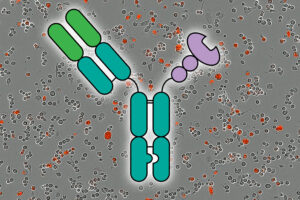
Whenever we fall sick with body aches and fever, many of us instinctively reach for paracetamol (acetaminophen) and ibuprofen, two of the most common over-the-counter medications in India. However, groundbreaking research from the University of South Australia suggests that these seemingly harmless drugs could be silently contributing to the growing problem of antibiotic resistance.
In a pioneering study, researchers discovered that both ibuprofen and paracetamol not only drive antibiotic resistance when used individually but also amplify it when used together. The study assessed how these drugs interact with the broad-spectrum antibiotic ciprofloxacin and Escherichia coli (E. coli), a common bacterium responsible for gut and urinary tract infections. The findings revealed that ibuprofen and acetaminophen significantly increased bacterial mutations, rendering E. coli highly resistant to the antibiotic.
Most people are aware that overusing antibiotics can lead to resistance. However, what many do not realize is that other medications, especially those considered harmless, like ibuprofen and paracetamol, may also quietly contribute to this issue.
Understanding Antibiotic Resistance
Antibiotic resistance is one of the most pressing health challenges globally. It occurs when bacteria evolve in ways that make antibiotics—the drugs we rely on to treat infections—less effective or even useless. “As a result, common infections like urinary tract infections, pneumonia, or even cuts and wounds can become much harder, or even impossible, to treat,” explains Dr. Suranjit Chatterjee, senior consultant of internal medicine at Indraprastha Apollo Hospital, Delhi.
Key Findings of the Study
According to the study, “When bacteria were exposed to ciprofloxacin alongside ibuprofen and acetaminophen, they developed more genetic mutations than with the antibiotic alone, helping them grow faster and become highly resistant,” said lead researcher UniSA’s Associate Professor Rietie Venter. Alarmingly, the bacteria not only showed resistance to ciprofloxacin but also to multiple other antibiotics from different classes.
The Hidden Risks of OTC Drugs
Ibuprofen and paracetamol are among the most widely used over-the-counter drugs globally, frequently taken for pain, fever, inflammation, and headaches. “They’re considered safe and are a staple in most households. But despite their benefits, it now appears they have an unintended effect on the bacteria in our bodies,” explains Dr. Chatterjee.
Our bodies host trillions of bacteria, some beneficial and some harmful. These bacteria constantly interact with everything we consume, including medications. The pills can stress bacteria, which might seem beneficial since stress can kill bacteria. However, Dr. Chatterjee warns, “Not always. Sometimes, when bacteria are stressed, they activate survival mechanisms. This can include mutating or changing their structure to resist the effects of antibiotics in the future.” The combination of ibuprofen and acetaminophen has an even stronger effect, potentially accelerating the process by which bacteria become resistant.
Implications for Public Health
This study serves as a stark reminder of the need to carefully consider the risks of using multiple medications, particularly in aged care settings where residents are often prescribed a mix of long-term treatments. The World Health Organization (WHO) has declared antimicrobial resistance a global threat to public health, noting that bacterial resistance was directly responsible for 1.27 million global deaths in 2019.
By the Numbers: 1.27 million global deaths in 2019 were directly attributed to bacterial resistance, according to WHO.
The findings underscore the importance of responsible medication use and the need for increased awareness about the potential risks associated with over-the-counter drugs. As researchers continue to explore the complex interactions between common medications and antibiotics, it becomes increasingly clear that a more cautious approach to drug consumption is necessary to combat the growing threat of antibiotic resistance.
Looking forward, healthcare professionals and policymakers must collaborate to develop strategies that minimize the risk of antibiotic resistance, ensuring that both current and future generations can rely on effective treatments for bacterial infections.





